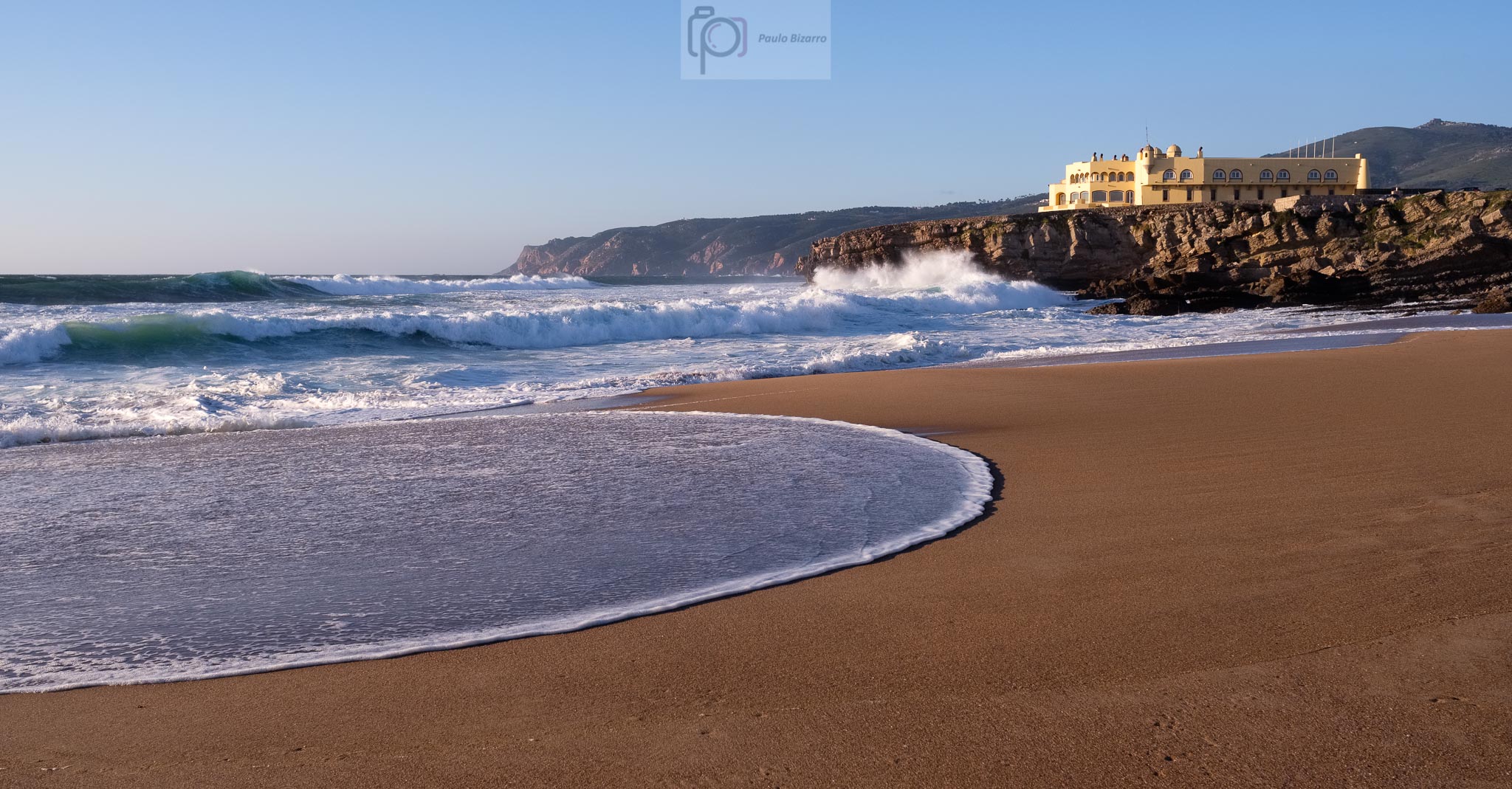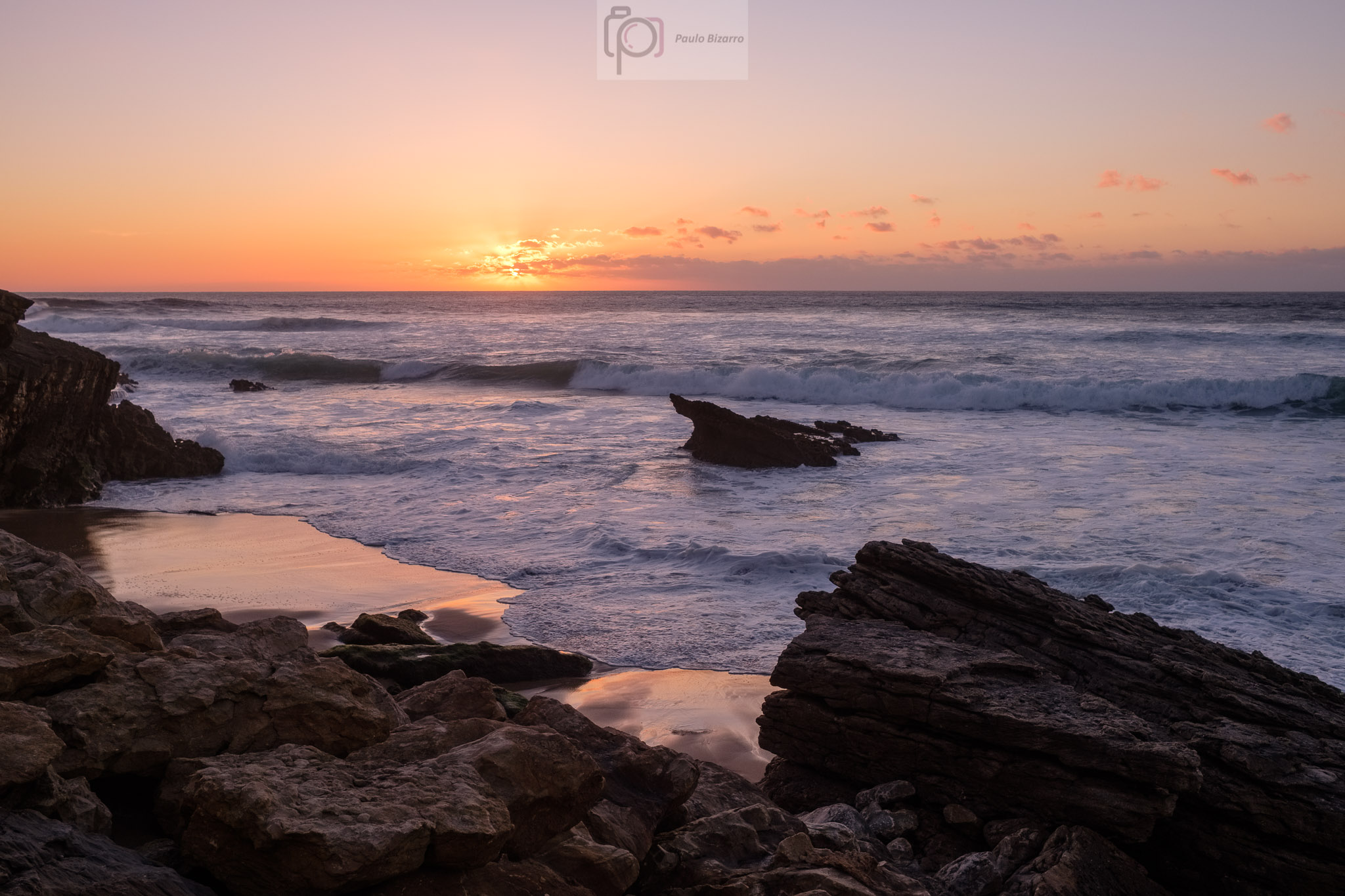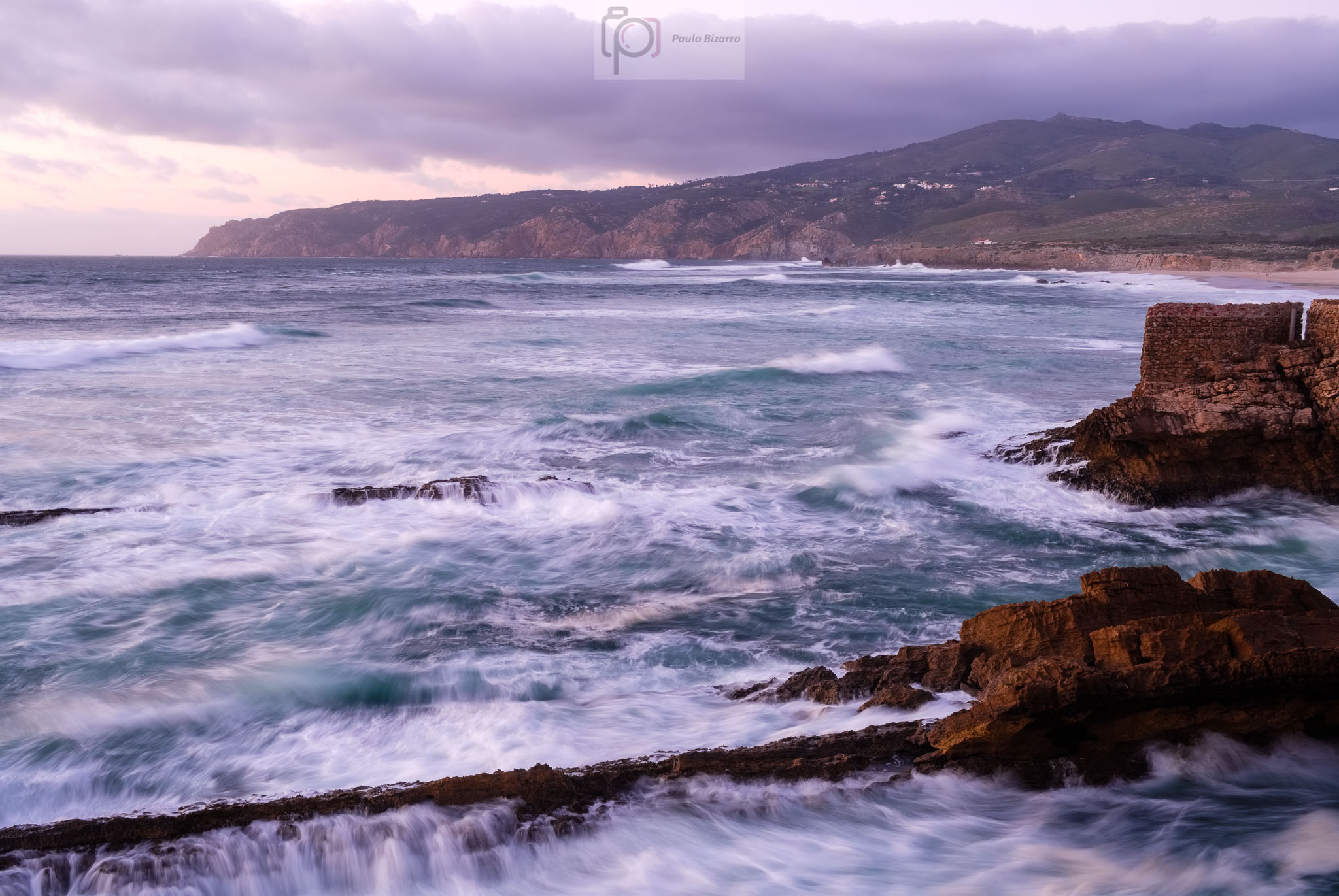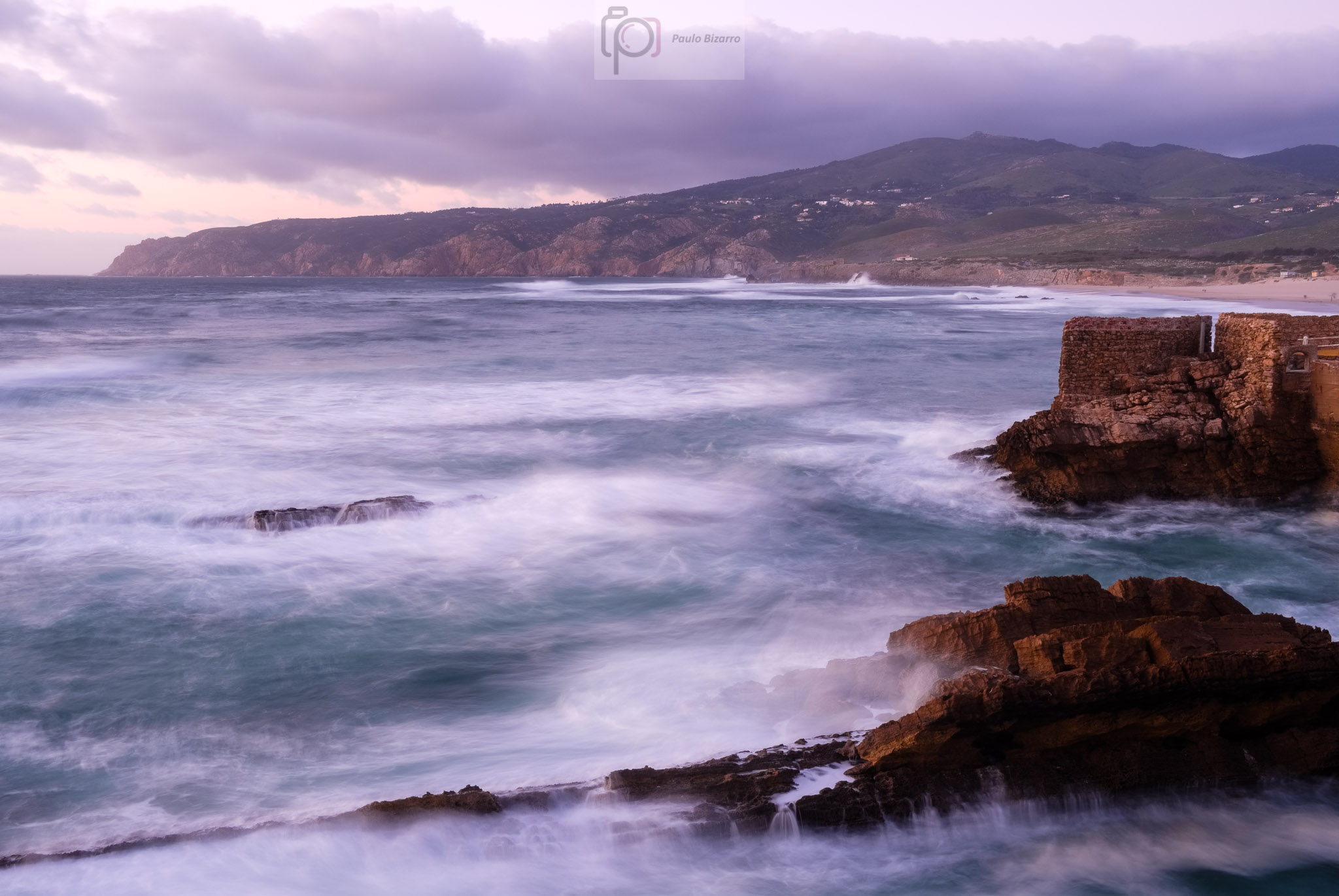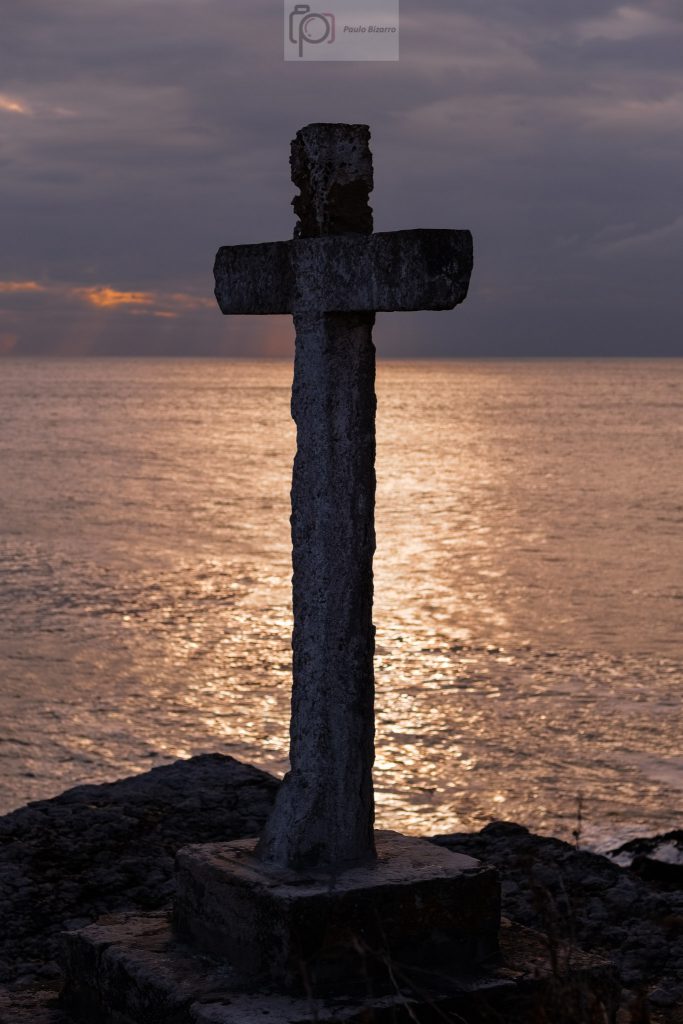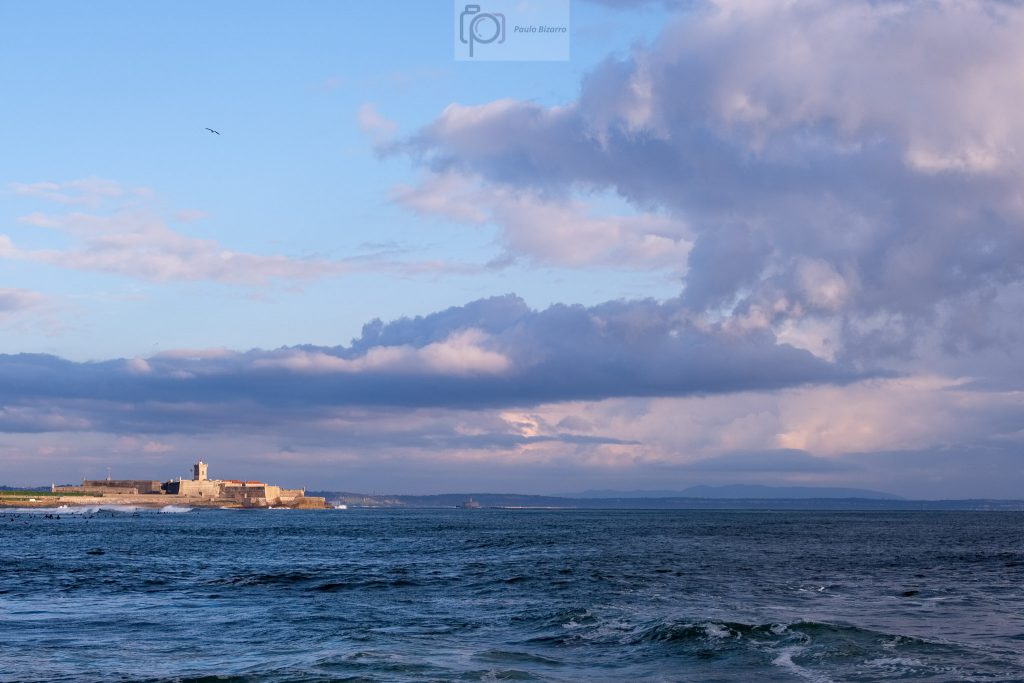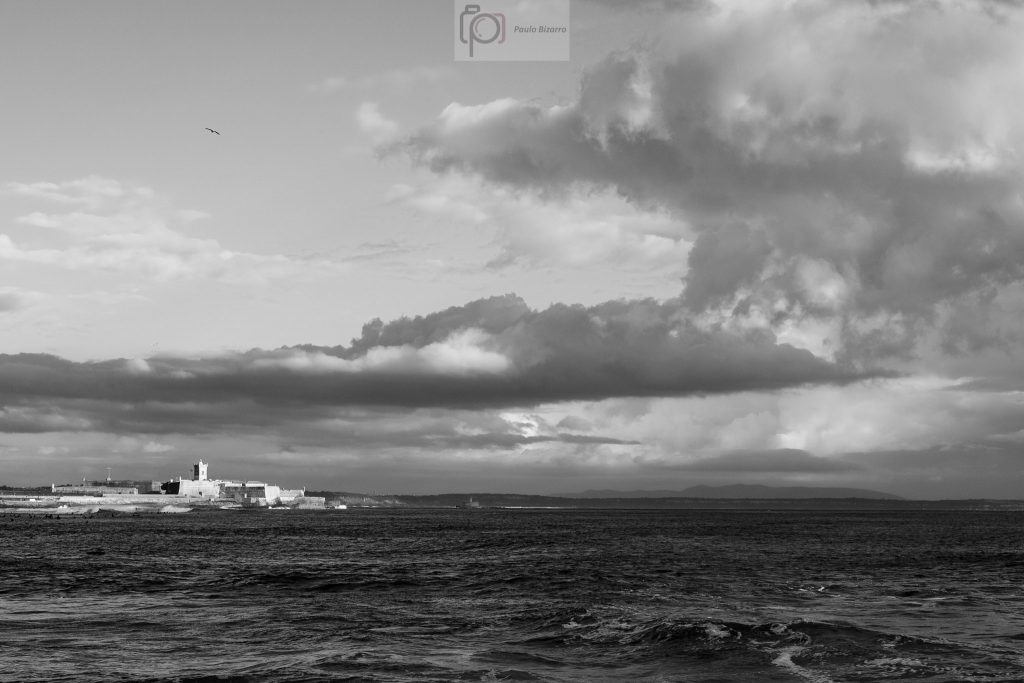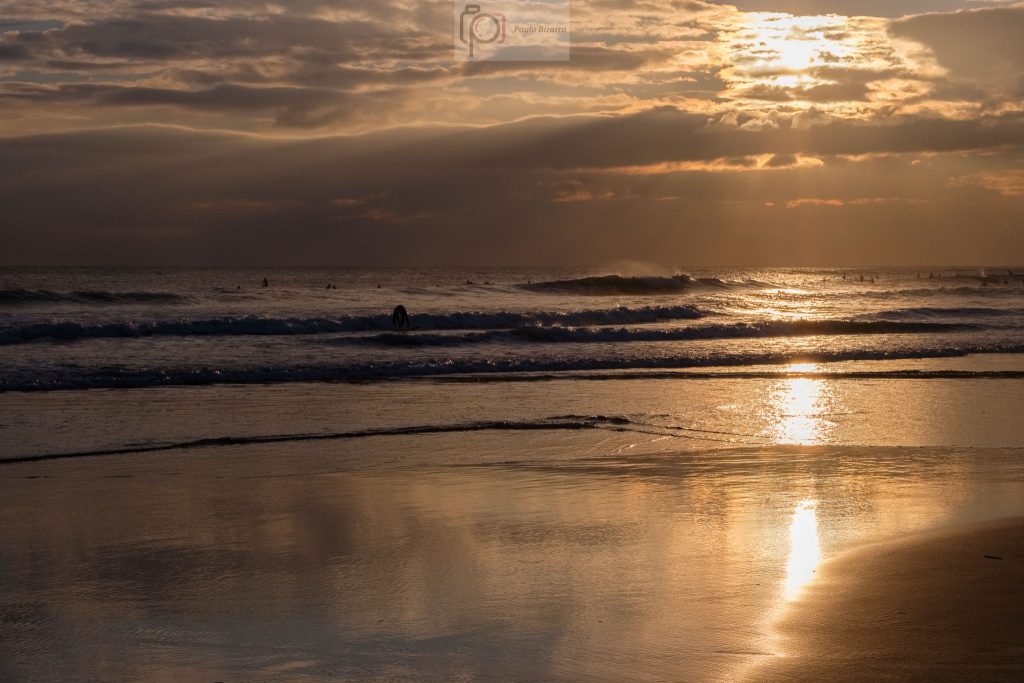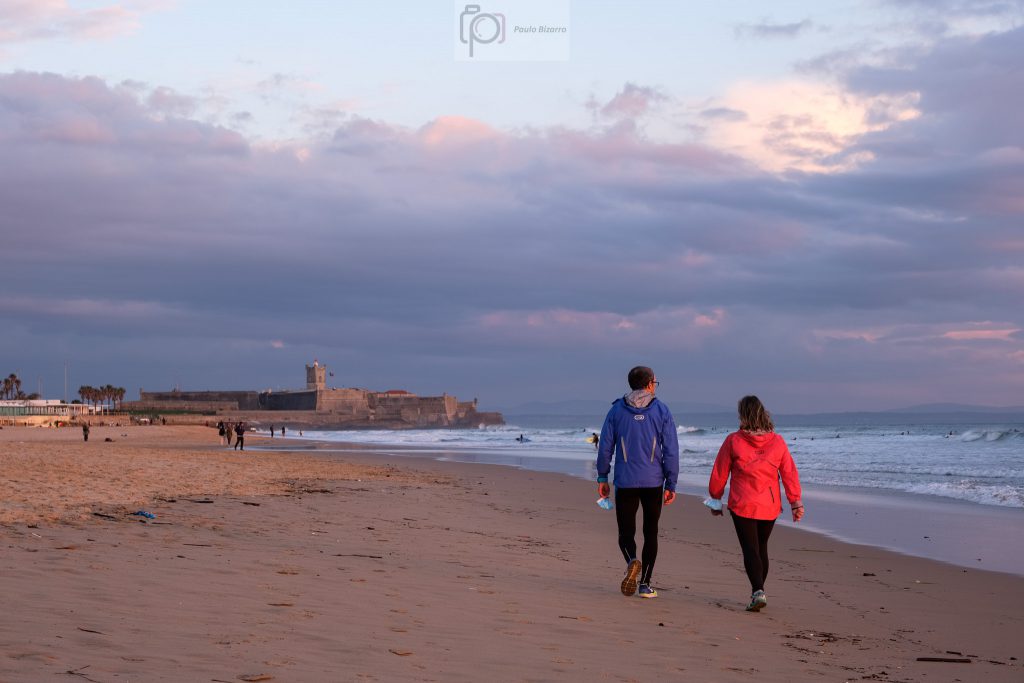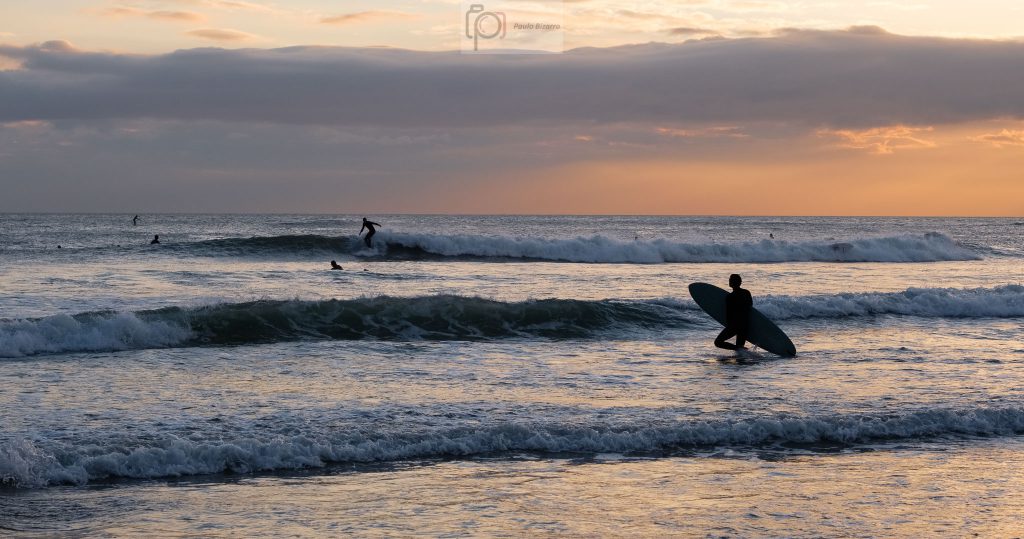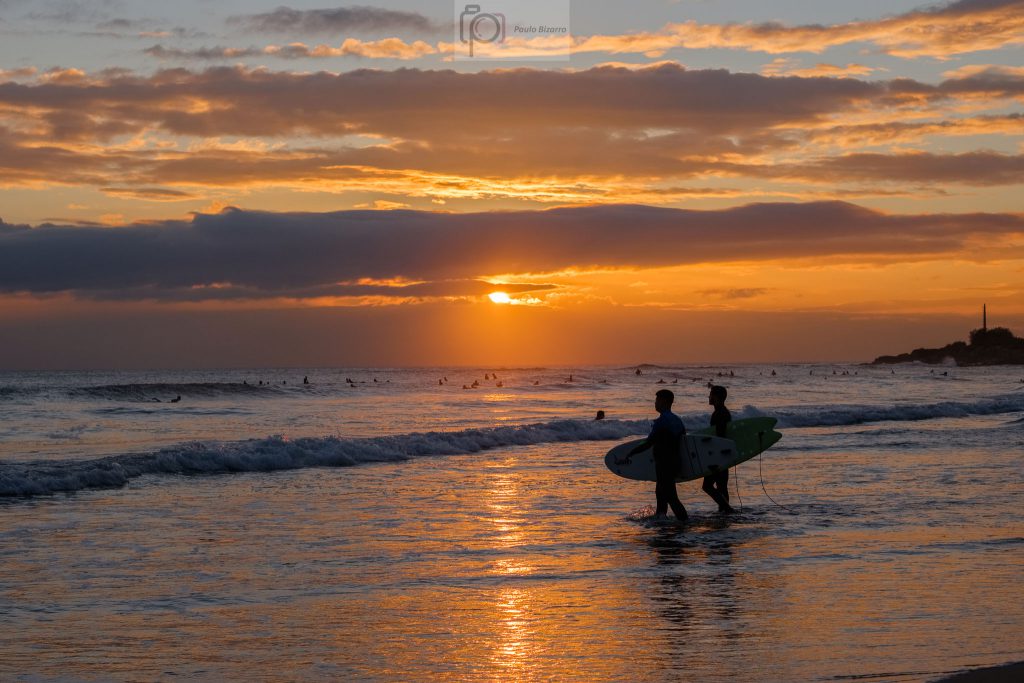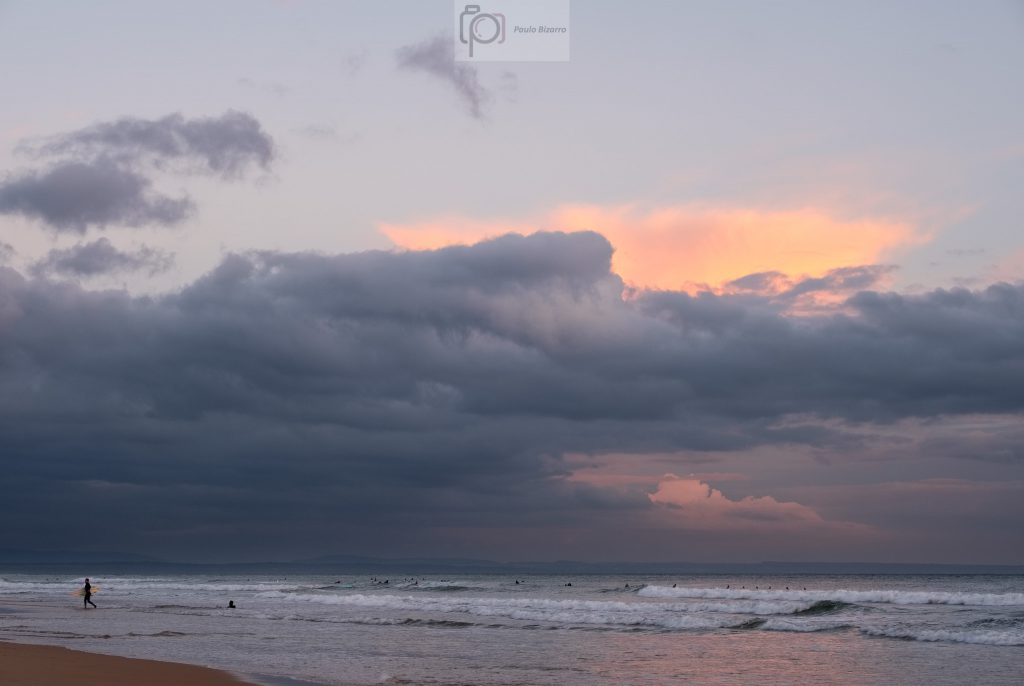This short essay follows on the footsteps of previous ones, describing another “quick photo outing near home during confinement“. This time, after finishing my working day, I went to Guincho beach, a few kilometres after the town of Cascais. This beach lies inside one of the most touristic areas in the Lisbon region, because it is located between Cascais and Sintra.
After leaving Cascais, the road stretches along a wind-beaten coastline, where the strong ocean surf keeps eroding the limestone rocks. There are several dune fields, covered by low lying vegetation that clings to the ground. Because of the constant wind and strong waves, Guincho is very popular with surfers. Normal beach going people should beware the dangerous currents and strong sea.
This character is partly due to the beach being open to the westerly winds, but also to the presence of the serra de Sintra, a large geologic igneous massif that dominates the landscape to the North. This mountain creates a barrier to the humid air coming in from the Atlantic, generating an almost perennial cloud cover along the coast of the region. In clear days, from the beach, it is possible to see the Cabo da Roca lighthouse (the westernmost point of continental Europe) and the Pena palace.
Several years had passed since my last time visiting the beach, so it was nice to go back. After parking the car, I walked down to the beach to find a good spot and proceeded to make several photos. As the sunset approached, the light was changing very fast; for the last few photos, the light level was low enough to allow exposure times around 1 second, which smoothed the water a little. My photo kit for this little trip was quite simple, consisting only of the Fujifilm X-Pro3 camera, Fujinon 23mm f/2 lens, and a small tripod. Once again, I felt thankful to be able to visit such beautiful places not very far from where I live, which helps to endure this pandemic crisis.
Stay safe everyone.
